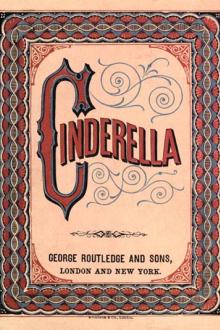The Young Carthaginian: A Story of The Times of Hannibal by G. A. Henty (no david read aloud .txt) 📕

Read free book «The Young Carthaginian: A Story of The Times of Hannibal by G. A. Henty (no david read aloud .txt) 📕» - read online or download for free at americanlibrarybooks.com
- Author: G. A. Henty
Read book online «The Young Carthaginian: A Story of The Times of Hannibal by G. A. Henty (no david read aloud .txt) 📕». Author - G. A. Henty
Hannibal's force was inferior in strength; his infantry of the line were twenty thousand strong. He had eight thousand light infantry and ten thousand cavalry. The Carthaginian formation was much deeper than the Roman, and Hannibal's line of battle was less than two miles long. In front of it were the elephants, thirty-six in number, divided in pairs, and placed in intervals of a hundred yards between each pair.
While the Romans, exposed to a bitterly cold wind, chilled to the bone by their immersion in the stream, and having come breakfastless from camp, were forming their long order of battle, Hannibal's troops, gathered round blazing fires, were eating a hearty breakfast; after which, in high spirits and confidence, they prepared for the fight.
Hannibal called the officers together and addressed them in stirring words, which were repeated by them to the soldiers. The Roman preparations had occupied a long time, and it was afternoon before they advanced in order of battle. When within a short distance of the Carthaginians they halted, and the trumpets and musical instruments on both sides blew notes of defiance. Then the Carthaginian slingers stole out between the ranks of their heavy infantry, passed between the elephants, and commenced the battle.
Each of these men carried three slings, one of which was used for long distances, another when nearer to the foe, the third when close at hand. In action one of these slings was wound round the head, one round the body, the third carried in hand. Their long distance missiles were leaden bullets, and so skilful were they that it is said they could hit with certainty the face of a foe standing at slinging distance.
Naked to the waist they advanced, and with their long distance slings hurled the leaden bullets at the Roman infantry. When closer they exchanged their slings and discharged from them egg shaped pebbles which they had gathered from the bed of the Trebia. When within still closer distance with the third slings they poured in volleys of much larger and heavier stones, with such tremendous force that it seemed as though they were sent from catapults. Against such a storm of missiles the Roman skirmishers could make no stand, and were instantly driven back.
Their Cretan archers, after shooting away their arrows with but small effect, for the strings had been damped in crossing the river, also fled behind the heavy troops; and these in turn were exposed to the hail of stones. Disorganized by this attack, the like of which they had never experienced before, their helmets crushed in, their breastplates and shields battered and dented, the front line of the Romans speedily fell into confusion. Sempronius ordered up his war machines for casting stones and javelins, but these too had been injured in their passage across the river.
The hail of Carthaginian missiles continued until the Roman light infantry were forced to fall back; and the slingers were then recalled, and the heavy infantry of the two armies stood facing each other. The Carthaginians took up close order, and, shoulder to shoulder, their bodies covered with their shields, they advanced to meet the legions of Rome. As they moved, their music—flute, harp, and lyre—rose on the air in a military march, and keeping step the long line advanced with perfect order and regularity. In the centre were the Carthaginian foot soldiers and their African allies, clothed alike in a red tunic, with helmet of bronze, steel cuirass and circular shield, and carrying, besides their swords, pikes of twenty feet in length. On the left were the Spaniards, in white tunics bordered with purple, with semicircular shields four feet in length and thirty-two inches in width, armed with long swords used either for cutting or thrusting.
On the left were the native allies, naked to the waist, armed with shields and swords similar to those of the Gauls, save that the swords were used only for cutting.
Sempronius brought up his second line to fill the intervals in the first, and the Romans advanced with equal steadiness to the conflict; but the much greater closeness of the Carthaginian formation served them in good stead. They moved like a solid wall, their shields locked closely together, and pressed steadily forward in spite of the desperate efforts of the Roman centre in its more open order to resist them; for each Roman soldier in battle was allowed the space of a man's width between him and his comrade on either side, to allow him the free use of his weapon. Two Carthaginians were therefore opposed to each Roman, in addition to which the greater depth of the African formation gave them a weight and impetus which was irresistible.
While this fight was going on the Numidian horsemen, ten thousand strong, charged the Roman cavalry. These, much more lightly armed than their opponents and inferior in numbers, were unable for a moment to withstand the shock, and were at once driven from the field. Leaving the elephants to pursue them and prevent them from rallying, the Numidian horsemen turned and fell on the flanks of the long Roman line; while at the same moment the Carthaginian slingers, issuing out again from behind the main body, opened a tremendous fire with stones heated in furnaces brought to the spot.
Although taken in flank, crushed under a storm of missiles, with their cavalry defeated and their centre broken, the Romans fought steadily and well. Hannibal now launched against their ranks the elephants attached to the infantry, which, covered in steel armour and trumpeting loudly, carried death and confusion into the Roman ranks. But still the legions fought on obstinately and desperately until the sound of wild music in their rear filled them with dismay, as Mago, with his division of Numidian infantry, emerged from his hiding place and fell upon the Romans from behind.
Struck with terror at the sudden appearance of these wild soldiers, of whose ferocity they had heard so much, the Romans lost all heart and strove now only to escape. But it was in vain. The Carthaginian infantry were in their front, the cavalry on their flank, the Numidians in their rear.
Some ten thousand Roman soldiers only, keeping in a solid body, cut their way through the cavalry and reached Piacenza.
Thirty thousand were slaughtered on the plain. Many were drowned in trying to swim the Trebia, and only the legion which had remained to guard the camp, the broken remains of the cavalry, and the body which had escaped from Piacenza remained of the fifty thousand men whom Sempronius commanded.
The exultation of the victors was unbounded. The hitherto invincible legions of Rome had been crushed. The way to Rome was clear before them. All the fatigues and hardships they had undergone were forgotten in the hour of triumph, and their native allies believed that their freedom from Rome was now assured.
The verdict of great commanders of all ages has assigned to the battle of the Trebia the glory of being the greatest military exploit ever performed. The genius of Hannibal was shown not only in the plan of battle and the disposition of his troops, but in the perfection with which they were handled, in the movements which he had himself invented and taught them, and the marvellous discipline with which he had inculcated them.
Napoleon the First





Comments (0)